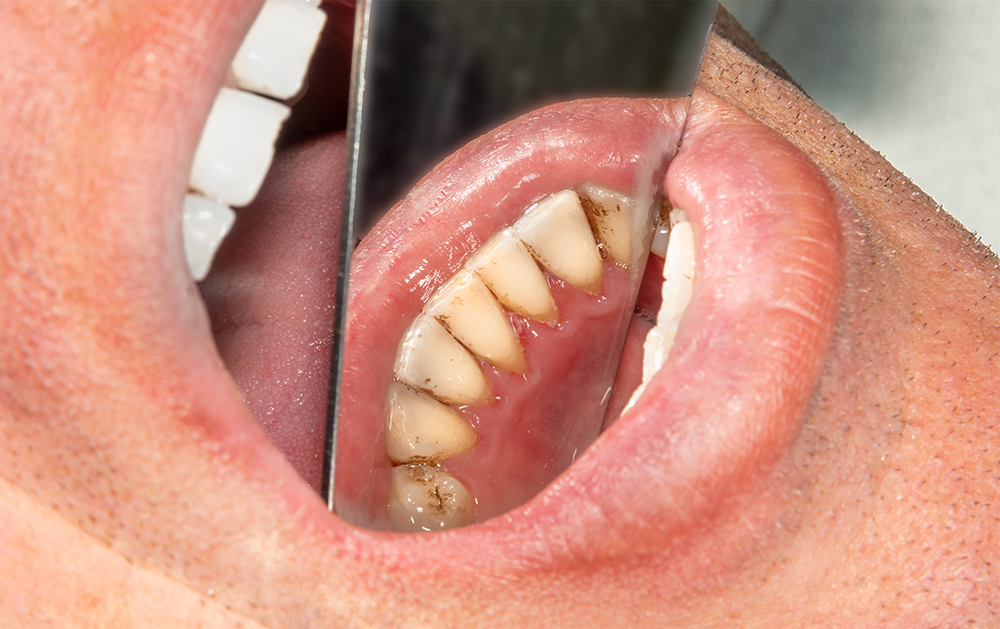Dental tartar, what is it, and how does it affect oral health
The accumulation of tartar in the mouth and being a cosmetic problem can also cause bad breath and even tooth loss. Discover how to carry out proper oral hygiene to prevent excess dental plaque.
The mouth is one of the parts of the body that is most exposed to bacteria derived from the consumed food. These microorganisms can accumulate on the teeth and gums, forming bacterial plaque. If they are not eliminated with proper hygiene, they can give rise to dental tartar and also called dental calculus or dental tartar – an aesthetic problem that can end with a total loss of the piece.
Characteristics and consequences of tartar for your teeth
One of the significant characteristics of this accumulation of bacteria, or the most obvious symptoms of tartar, is its appearance, since it is similar to that of dry clay, and its color begins to be white in the dental plaque phase and gradually turns yellow. Brown, and even black in the most serious cases.
The accumulation of bacterial plaque does not hurt or annoy, and therefore the person who suffers from it is not aware of the high risks that the health of their mouth runs. Roughness is usually observed in them, which are also noticeable when passing the tongue. Sometimes the tartar can break, and, being hard, many people think that what has been fragmented is the tooth.
Depending on where the tartar accumulates, it can be supragingival. It is located in the most superficial part of the teeth and gums, or subgingival tartar, just below them, causing inflammation and even periodontal pockets.
The pieces’ outermost is usually free of plaque since the tongue and other foods rub against this area, making it more difficult for it to deposit. The teeth between canine and canine are where the most dental plaque can collect, followed by the second upper molar.
If tartar is not treated in time, it can cause serious oral health problems, such as gingivitis, damages soft tissues, and periodontitis. It causes inflammation and bleeding in the gums and a high risk of bone loss-, enamel damage, tooth decay, receding gums, bad breath, and even total tooth loss. Inflammation can also appear as a result of the number of accumulated bacteria.
Causes of dental plaque build-up and the appearance of tartar
The plaque does not have a well-defined utility, but it is believed that it could have served in antiquity to offset the acidity derived from fruits, tubers, berries, or leaves uncooked, which they ate. However, most of this dental plaque was removed by chewing food that, being raw, consistent, and fibrous, would remove any rest from the mouth.
But then the fire came, and the way of processing food was changing until today when ultra-processed products with excess fats and sugars predominate. Since what we eat can no longer help us clean our teeth, we now have to do it ourselves.
Dental plaque can appear in people of all ages, although it is more common in children and the elderly, as they are the groups that tend to neglect their dental hygiene the most. The teeth are also a risk factor for the accumulation of tartar. Having them mounted on each other or crowded makes some areas very difficult to access, where bacterial plaque will accumulate more quickly.
Foods that promote tartar formation
The Saliva contains salts and a pH varying between each person. Both are what, along with foods, especially the process- and poor hygiene, can promote the occurrence of dental plaque first and tartar on cases in which it remains longer in the oral cavity.
Although there is not much scientific evidence, it is believed that some foods and bad habits can promote the accumulation of dental plaque and the appearance of tartar on the teeth. Among them are soft drinks, wine, tea, sweets, alcoholic beverages, tobacco, or the abuse of mouthwashes with chlorhexidine, which if not eliminated or restricted from daily life, or the oral cavity is not well cleaned. After consuming them, they can increase the risk of oral problems.










